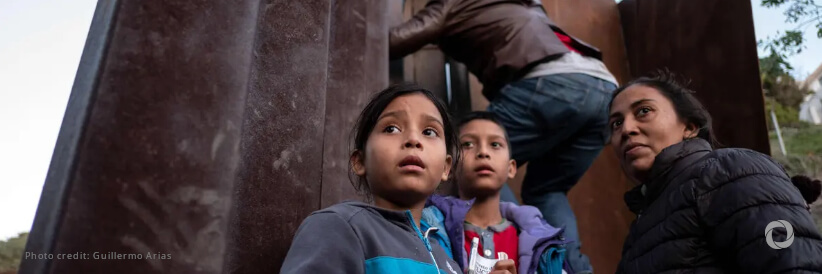According to data from the Interagency Group on Mixed Migratory Flows (GIFMM is the Spanish acronym) between 1,600 and 2,000 migrants arrive daily in the municipality of Necoclí in Colombia, with the intention of starting the journey through the Darién Gap to reach Panama. Conditions of extreme vulnerability, lack of opportunities, and misinformation are the main reasons that lead thousands of migrants to undertake a risky journey through several Latin American countries to reach the United States.
”The images we see every day of men, women, boys, and girls, with unmet basic needs, added to the heartbreaking stories we receive about the multiple risks they face on the migratory route, show a humanitarian situation of great dimensions”, said Catalina Vargas, Country Director of CARE Colombia.
Official information from Honduras and Guatemala estimates that the population transiting to North America has quadrupled in the last months of 2022, increasing the risks and humanitarian needs along the way. In Honduras, tragic accidents were reported in the last two weeks, leaving 6 people dead, including a 5-year-old child, and more than 10 people injured.
According to IOM, in 2022, 60% of migrants who have transited through this migratory passage come from Venezuela, 10% from Haiti, 8% from Cuba, 7% from Senegal, and about 5% from Angola. Additionally, according to Panama’s migration department, the number of Venezuelans increased from 2,819 in 2021 to 107,692 in 2022.
Based on its strategy of Women Lead in Emergencies, CARE has regularly conducted rapid gender analyses in the countries where it operates (Colombia, Honduras, and Guatemala), which show the violation of rights and situations of gender violence faced by migrant women and girls. The lack of access to basic health services, especially sexual and reproductive health services, is a recurring issue, as well as the activation of routes to focus on cases of GBV (Gender-Based Violence) and human trafficking.
Together with local partners and Humanitarian Country Teams, CARE provides humanitarian assistance with a gender approach, including support to shelters, delivery of kits with basic hygiene supplies, sexual violence prevention kits, case management in situations of gender-based violence, and it works with host communities and awareness campaigns against the risks of migratory transit. In view of the new measures of the U.S. Government, the migrant population, especially Venezuelan migrants, faces additional vulnerability in the migration process, which requires a common strategy to ensure protection with a gender approach and access to rights.
CARE calls upon authorities and humanitarian actors in the countries linked to this migratory route to urgently define an effective regional plan that includes response mechanisms to address humanitarian and protection needs, promote the international right to migrate, and consider the particular needs of women, boys and girls to prevent and address situations of psychological, economic, and sexual violence faced by migrants in the migratory route.
In addition to maintaining alerts and adopting measures to curb migration mafias, they must establish effective coordination mechanisms, strengthen local response capacities, and work more closely with social organizations and local governments in host communities.

